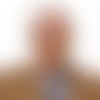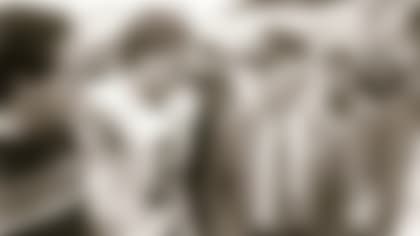The race for the No. 1 draft pick could come to an end in Week 16. Cleveland enters the final two games with a one-game lead, but as I found out first-hand 28 years ago, anything can happen.
I love this time of year because almost every game, for better or worse, has real meaning. If you're one of the 32 teams, you're either positioning for the playoffs or the draft, or teetering between the two. It's one of the beauties of the NFL, an intended consequence set up by Pete Rozelle that no other league can replicate.
I look back on my career with the Dallas Cowboys with a lot of fond memories. The championships, of course, come to mind quickly, but the drafts and the circumstances leading up to them have been just as memorable.
None more so than in 1989 when we selected Troy Aikman with the first overall pick. There are interesting comparisons to what is going on this season. While there is no Aikman in the 2017 draft, the race for the No. 1 pick is going down to the wire.
With two weeks remaining in the 1988 season, things did not look promising for us. Green Bay (2-12) essentially had a one-game lead going into Week 15 because they owned a tiebreaker. We also were sitting at 2-12 after losing to Cleveland in Week 14 -- our 10th straight defeat -- but because of the tiebreaker, we had pretty much conceded the top pick.
But the Packers went and did something no one saw coming -- they won out, beating Minnesota at home and upsetting heavily favored Phoenix on the road in the final week. Our Week 15 victory over Washington gave us what looked like an insurmountable deficit, but our loss to division-winner Philadelphia in the finale, paired with Green Bay's win over the Cardinals a day earlier, unexpectedly handed us the No. 1 pick and eventually Aikman, while altering the course of the next two decades for both franchises.
NFL Films did a wonderful job with "Troy Aikman: A Football Life" (it debuted earlier in the month on NFL Network), but there were some facts surrounding that 1989 draft that were left on the cutting-room floor.
Namely, that Aikman wasn't a slam-dunk choice by everyone in our organization. There was another name being bandied about, and it wasn't Deion or Barry Sanders, or Derrick Thomas -- three of four top-five picks that year who are in the Pro Football Hall of Fame (Aikman, of course, is the other). Also under consideration for the Cowboys was Tony Mandarich, the massive offensive tackle from Michigan State who went to Green Bay with the No. 2 pick and went on to become one of the league's poster boys for all-time draft busts (more on that later).
I first met Troy in 1984 when he was an 18-year-old freshman at Oklahoma. The Sooners were undefeated at the time, ranked second in the nation and heading into a game at Kansas (one they would lose for their only regular-season defeat). I was sitting in the office of Mack Brown, Oklahoma's offensive coordinator at the time, doing prep work for the 1985 draft. Mack, a great friend of mine, introduced me to Troy that day. Troy was so nervous, stuttering and misspeaking every time he opened his mouth. I remember turning to Mack after Troy left the office and saying, "Coach, I hope you don't have to play him this week." (Truthfully, it was the only time in all these years I've known Troy that he wasn't composed.)
I saw Troy four years later in a game vs. Washington State. Playing for top-ranked UCLA after transferring, Aikman was heavily criticized for his team's 34-30 loss. The Bruins had failed to score late inside WSU's 10-yard line. Aikman accepted the responsibility but it wasn't his fault; UCLA had the wrong personnel in on four consecutive incompletions from the 6-yard line. Nonetheless, some held it against him, even in their draft analysis.
I marveled at Aikman's athletic ability. I went golfing with him and Barry Sanders before the start of their final college seasons as part of the Playboy All-American festivities in Miami. While Sanders had never golfed before (and played like it that day), Aikman hit the ball with a 1-iron farther than anyone I had ever seen. I was completely sold.
So convinced, I met Troy on the field after UCLA beat Arkansas in the 1989 Cotton Bowl Classic in Dallas, where he was named MVP, and told him he would be our choice with the top pick in the draft.
Of course, everything changed the following month when the Cowboys were sold to Jerry Jones. Tex Schramm and I stayed on through the draft but ultimately the choice of who would be taken with the top pick was up to the new regime installed two months before the April draft.
If there were any questions about Aikman, they should have been erased after a private pre-draft workout at UCLA in which new head coach Jimmy Johnson, offensive coordinator Dave Shula, quarterbacks coach Jerry Rhome and myself attended (I bought lunch). To this day, it was the single best individual workout by a quarterback I have ever seen. He must have thrown 100 passes, not one of them uncatchable.
"If we would have had him in Miami, we would have gone undefeated," Jimmy remarked to me on our flight back to Dallas, referring to his final season with the Hurricanes in which he won the national title with one loss. "And we would have won every game by 50 points."
"I rest my case," I replied.
Not everyone was sold like I was. There were some in our organization then that will tell you today the talk of taking Mandarich over Aikman was a smoke screen. I don't believe that. What I don't understand is why you would need a smoke screen when you own the No. 1 pick.
I was getting intel from my college sources on Mandarich, who by this time was being billed (mostly by himself) as the best offensive tackle prospect the NFL had ever seen. Glen Mason, the former Kansas and Minnesota head coach who was one of Ohio State's top recruiters when Mandarich was in high school, told me he didn't pay much attention to the Canadian tackle because Mandarich lacked size, was slow, and older than most high school prospects. The suspicion of steroid use was more than a suspicion to me and others involved in the college game, as we all found out years later.
Still, we had some with the team convinced Mandarich should have been the choice over Aikman. Maybe that's because it looked for some time that we wouldn't have a choice between the two players, and these folks weren't mentally able to pivot once the No. 1 pick landed, however fortunately, in our laps on the final day of the 1988 season.
Who knows. Maybe 30 years from now we'll be talking about how the great one from the 2017 draft slipped through the Browns' fingers and landed in San Francisco.
Follow Gil Brandt on Twitter _@GilBrandt_.













